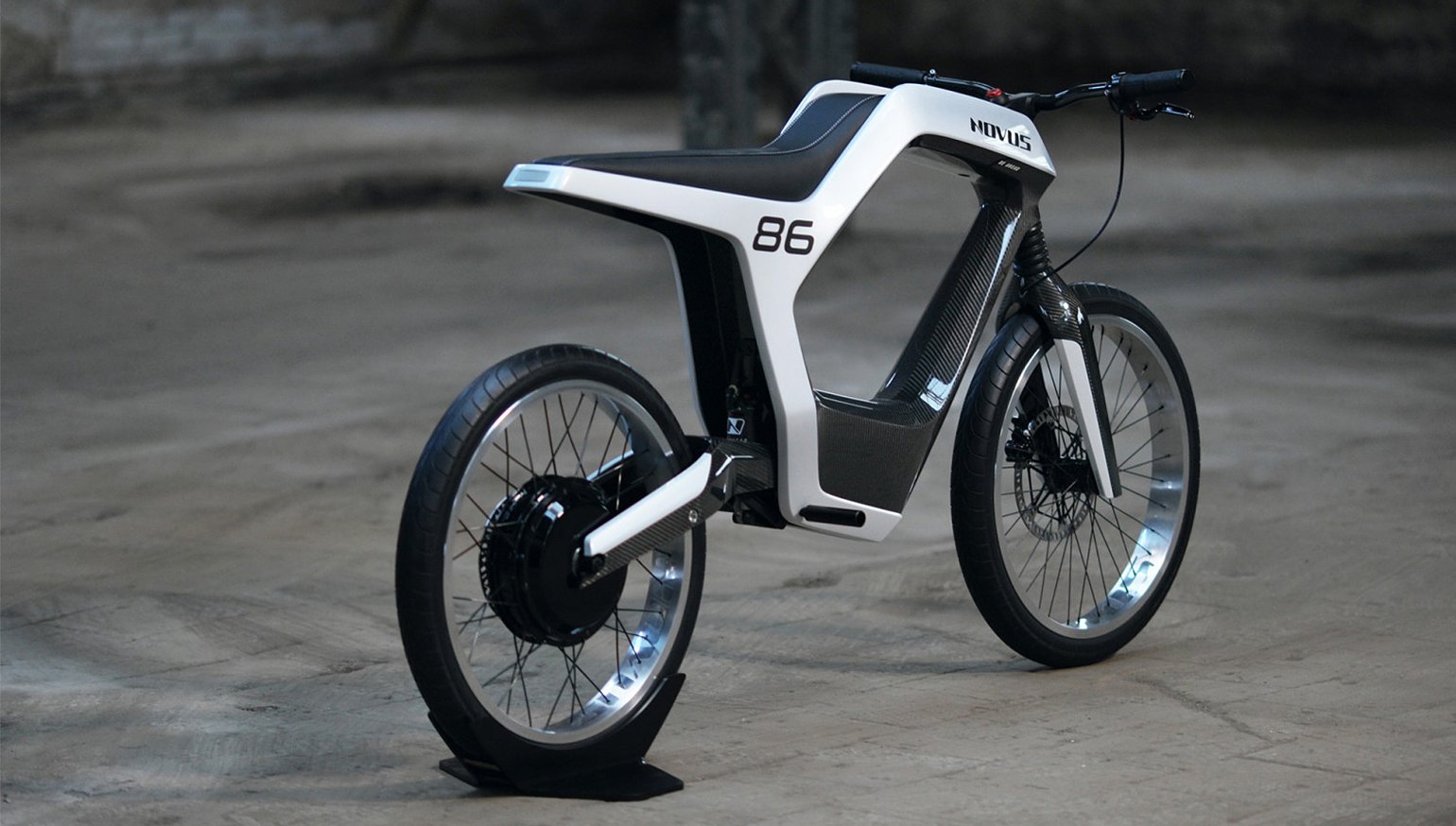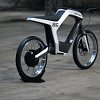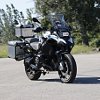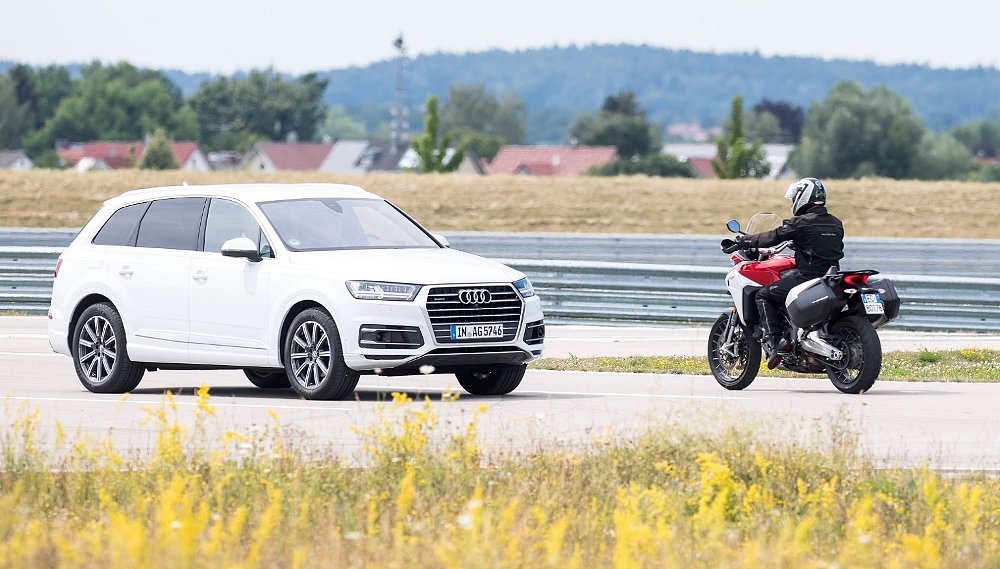The big motorcycle story out of the Consumer Electronics Show 2019 was easily Harley-Davidson’s first production electric motorcycle, the LiveWire. But it wasn’t the only moto tech story in Vegas this week. Here’s a recap of the show’s offerings for motorcyclists.
NOVUS electric motorcycle/ebike/thing
The overwhelming majority of discussion surrounding the LiveWire involved price and range, understandably. If that bike set you off, maybe skip this story. A small firm called NOVUS decided they’d design an electric motorcycle on a basically unlimited budget. Using a hand-laid carbon fiber monocoque, the bike weighs just 85 pounds (!), goes some 60 miles on a charge, and tops out at 60 mph. To achieve the super clean design, NOVUS used monoshock suspension at both ends, with a fork that reminds me of the old Cannondale Headshok. Somewhere between an electric motorcycle and an ebike, it looks like fun, but I’ll never get to ride one because it costs $39,500. Next!
Audi, Ducati, Ford, and Qualcomm: C-V2X vehicle communication system
Using Qualcomm’s 9150 C-V2X chipset, Audi, Ducati, and Ford showed off their progress in “technology for roadside safety, traffic efficiency and automated driving.” Vehicles equipped with the chip navigated an intersection together, establishing right of way through inter-vehicle communication. V2X means the chipset can be adapted to multiple uses, like Vehicle-to-Vehicle, Vehicle-to- Infrastructure, and Vehicle-to-Pedestrian models.
“The four-way stop use case provides a glimpse of how cooperative driving will be possible with C-V2X in the future. Besides additional safety, C-V2X is designed to also improve comfort and efficiency, which can be applied to both current and future autonomous driving,” said Anupam Malhotra, Director, Connected Vehicles & Data at Audi’s American division. The tech’s still a long way out, but intersections are the scene of far too many accidents involving motorcycles, so watch this space.

BMW’s riderless motorcycle
BMW brought its riderless R 1200 GS over to the United States for the first time, with demonstrations to show off their autonomous tech. If you’re new to this story, see our previous report on Common Tread, but they’ve essentially built this special project for testing new ideas without endangering a human test rider. An example would be advanced vehicle detection systems still in development. BMW isn’t selling riderless for the tech for the street, so I won’t start worrying until they come out with a bike that writes reviews about itself, too.

R-Pur Nano Mask
Strangest moto-innovation of CES goes to… the folks at R-Pur! It might look a little odd, but the Nano mask has big aspirations. Poor air quality in congested urban areas can lead to severe health risks and issues, so R-Pur designed this mask to filter all sorts of junk out of the air. Here’s where it gets interesting. The prototype Nano shown at CES senses the air quality, then illuminates an array of LEDs across the front of the mask to indicate pollution levels. It’s easy to dismiss the idea because of the lights, but riding in heavy pollution is no joke in many parts of the world. If a light-up mask with an app is what it takes for someone to like the filter and put it on, more power to ‘em. European riders can already purchase the R-Pur Nano for around $200.
Again, if you haven’t checked out the Harley LiveWire, that’s the biggest moto news out of CES this year. Harley releasing a new motorcycle at an electronics show indicates an enormous shift from even 10 years ago, and I suspect they're just among the first motorcycle manufacturers to bring their new models to the show. As CES gets increasingly vehicle-focused, expect to see more moto tech debuts there in the not-so-distant future.










